All about the propagation of blackberries by cuttings
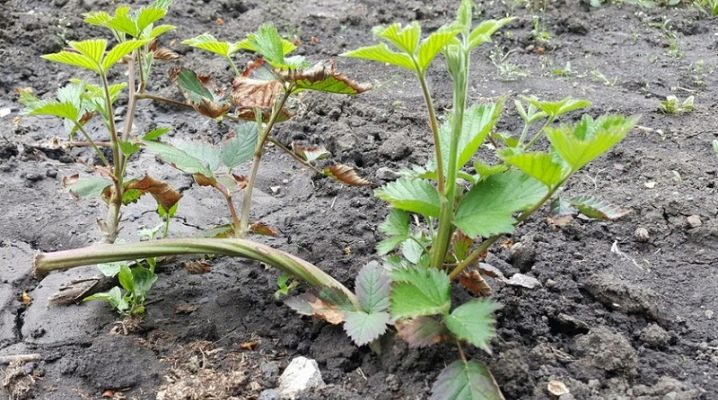
Blackberries can be propagated in several different ways. Gardeners like this feature very much, as it makes it possible to get a large amount of harvest in a short time.
It is enough to add a little knowledge about existing methods, varieties and the most suitable seasons. Many blackberry lovers have opted for propagation by cuttings, as the most simple.
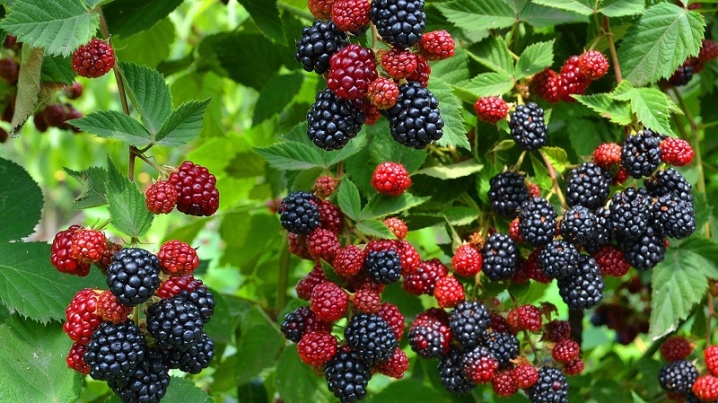
Advantages and disadvantages
One of the most common ways is to propagate blackberries by cuttings. This method is suitable even for novice gardeners and allows you to quickly increase the number of berry bushes, having some skills and the necessary equipment. The method has gained great popularity for a number of advantages.
- When growing blackberries from a cuttings, you can get a bush that will have all the characteristics of the parent.
- The method is economical in terms of monetary costs.
- Propagation by cuttings does not require much physical effort.
- In this way, you can quickly increase the number of blackberry bushes on the site.
- The shrub begins to bear fruit immediately the next year after the rooting of the cuttings.
There are no obvious disadvantages to this technique, but the recommendations for planting and care should be strictly followed.
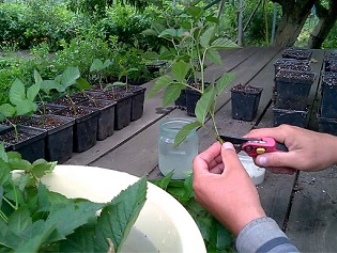
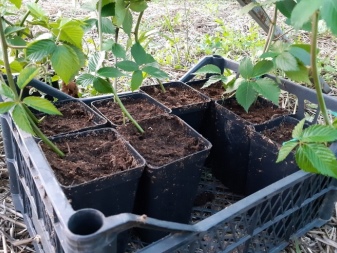
Timing
Blackberry cuttings can be cooked any time of the year. However, in the spring, reproduction in this way is important to complete before the buds open. Summer is considered the optimal season for green cuttings. Indeed, in this case, the material will be ready for transfer to a permanent place in the fall. For varieties that are recommended to be propagated by cuttings, the autumn period is ideal.
When choosing the time when it is better to harvest cuttings, some points should be taken into account.
- Blanks made in the spring cannot be stored for a long time. It is advisable to immediately plant them in a permanent place, and then mulch. In this case, the work must be completed before the foliage appears on the bushes.
- In summer, it is best to cut the cuttings in July, and then immediately place them in greenhouses where there is high humidity.... So they can be stored for a long time.
- In autumn, as a rule, lignified cuttings are harvested... It is enough to cut and prepare, and then send them to be stored until the first spring months. Storage is carried out in rooms with a humidity of 95% and at a temperature of no more than 4 degrees.
- In winter, stocking of planting material is not performed.
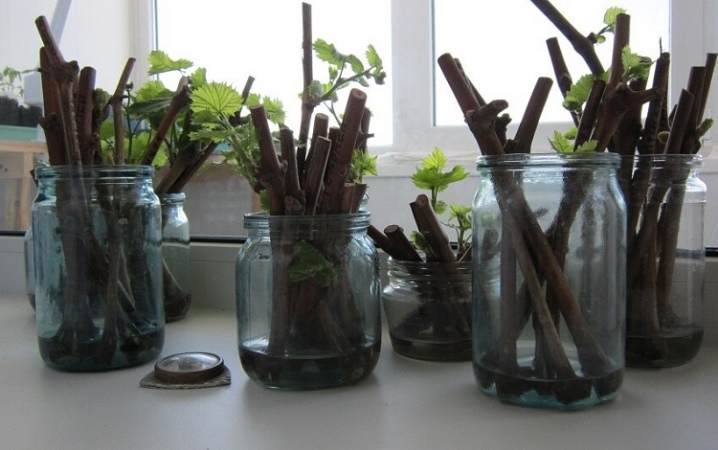
How to prepare cuttings?
Blackberry bushes can be propagated using different types of cuttings. However, it must be borne in mind that each of them has its own characteristics. This should be remembered during the preparation process. You can cut roots, green, as well as lignified shoots. To get great results, follow these tips.
- Observe the timing of cuttings, taking into account the variety.
- Correctly transfer the seedlings to a permanent place.
- Take proper care of the plant. After all, until the bush gets stronger, it will be very vulnerable.
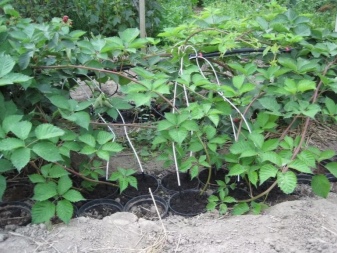
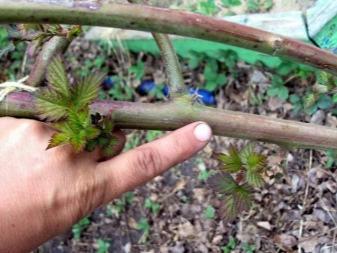
Root
During the winter months, many gardeners continue to travel to the country, spurred on by the desire to grow something. At this time, you can breed blackberries even in an apartment using root cuttings. However, for this it is necessary to prepare in advance the material for planting. It is optimal if the cuttings are 0.3 to 1.5 millimeters thick, and the length varies from 6 to 9 centimeters. For this, a bush is most often used, which is transplanted.
In the event that the cuttings were harvested in the spring, they must be placed in a previously prepared container and covered with a layer of soil in the amount of about 3 centimeters. When the seedlings appear and grow a little, and frosts are no longer expected, new plants can be transplanted into open soil. When harvesting parts of the root in the autumn months, they should be placed in a cool place for storage. In this case, the optimum temperature is from 2 to 5 degrees. It is advisable to store the cuttings in a bag, and every 7-8 days take them out, ventilate and inspect. The material is planted in containers at the end of winter, and then placed on the windowsill.
Bushes that have grown in containers are transplanted to a suitable place after the onset of steadily warm days. This method, with the right approach, ensures the germination rate of cuttings by 70%.
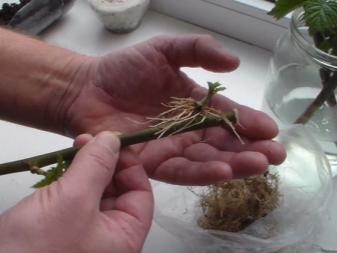
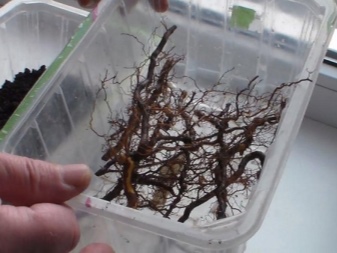
Green
For warm summer days, green cuttings are considered an ideal breeding method for blackberries. Usually they are taken from the very top of the bush. Procure them as follows.
- In July, it is necessary to cut the tops of the blackberry shoots at an angle of 45 degrees. Moreover, the length of the segment should be about 20 centimeters.
- From the bottom of the resulting scraps, a stalk with two leaves is taken. Diluting the bush directly from the top will not work.
- The bottom sheet is cut so that a small stump remains, and the top sheet is just cut in half.... It is important that the stalk has a healthy greenish tint.
- The resulting material must be placed in a growth stimulator for the roots, for example, in Kornevin.
- After that, the cuttings are distributed among the containers. and filled with a mixture of earth, perlite and peat, taken in equal proportions.
- Germination is carried out in a warm (30 degrees) and humid (96%) greenhouse, without drafts.
- Airing you can start when new leaves become visible on the seedlings.
- 7-8 days after that they can be transplanted into open soil.
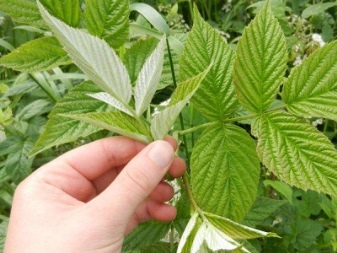
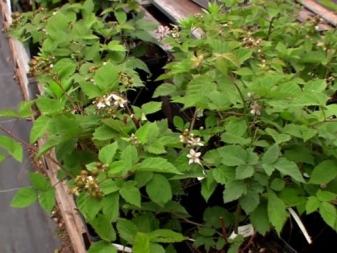
Lignified
Stem cuttings are another well-known propagation method for blackberry bushes. It is worth noting that it is suitable for almost all varieties of this plant. Experienced gardeners are advised to adhere to the following rules.
- In the fall, prepare cuttings from stems no more than one year old using a garden pruner. Each cut should be approximately 40 centimeters long. When working with prickly varieties, it is important to wear gloves so that there are no splinters on your hands.
- The resulting cuttings are buried in the ground before spring.
- With the onset of heat, planting material it is necessary to dig up and then update the slices on both sides.
- After that, each stalk is again placed in the ground. at a distance of 10 centimeters from each other.
- Landing follows cover with foillifting it with metal arcs.
- Caring for cuttings consists in periodic airing., watering with settled water and weeding out weeds.
- When three leaves appear on the bushes, they are removed from the ground.... Each will contain several sprouts with roots. They should be divided and planted in weaners.
- After new leaves appear on the seedlings, and the stems become longer, they can be planted in open soil.
This method can also be used in the spring months. However, it is important to have time to prepare and root the cuttings before the buds bloom.
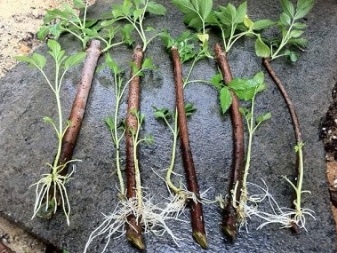
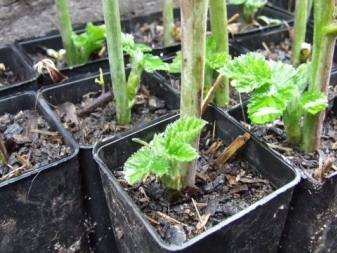
How to root?
If the cuttings were harvested in the autumn months, then it is best to root them in the spring.... Before rooting the material in the open field, it is recommended to treat it with Kornevin or other similar means. After that, a trench is made with a depth of 5 centimeters. It is necessary to lay the cuttings in it at a distance of 7 or more centimeters from each other, and then cover it with soil.
For everything to go well, you should take regular care of them. So, the ground around the cuttings should be constantly moderately moist, and there should be no weeds.If you want to speed up the process, you can put a greenhouse over the blackberry bed. Seedlings appear in a few weeks. Plants should be replanted when they look like bushes and have at least three true leaves.
At home, you can deal with cuttings from the middle of winter. To do this, you need to prepare a mixture of earth and coconut substrate in equal parts. The cuttings are laid out in a container with the resulting soil horizontally, deepening 4 centimeters. From above, the container is covered with a film or a lid. Periodically, the material is ventilated and watered moderately to prevent rotting. Roots will begin to form in 14 days, and after another 10 days, green sprouts will appear. Around each of them with pruning shears, you should cut off part of the stem, before planting in separate containers. They grow in them until new leaves appear.
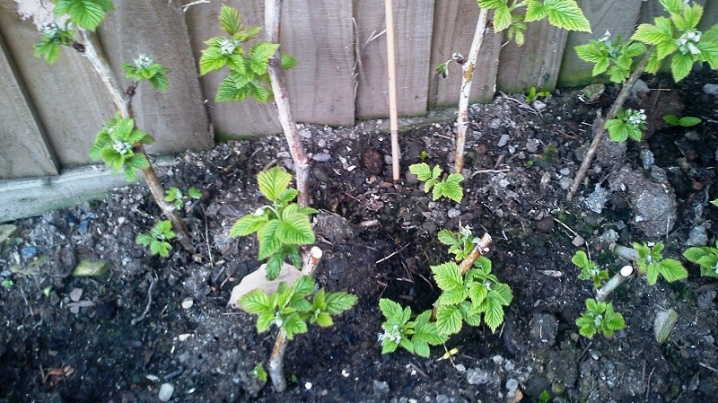
Landing
When the cuttings get stronger, it is important to plant them correctly in a permanent place so that they regularly please with a bountiful harvest.
- A couple of hours before transplanting, the bush must be watered.
- Next, pits or a trench are prepared for planting.
- A mixture of earth and humus is poured into them in equal parts.
- It is also worth adding a long-acting fertilizer such as AVA.
- It is necessary to plant the plant so that the bud is buried 3 centimeters underground.
- After that, the soil around the root must be tamped.
- To keep the water within the circumference of the trunk circle, it is worth making a roller around the trunk of the bush.
- Each seedling should be watered with 8 liters of water.
If everything is done correctly, then in a couple of weeks new foliage will appear on the new bushes. Next year, they will turn into a full-fledged blackberry and delight with the harvest.
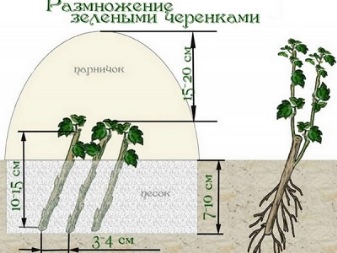
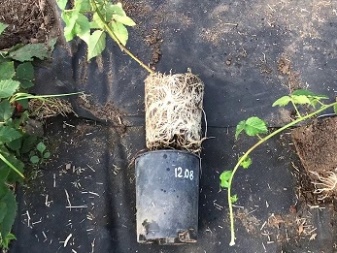
Follow-up care
Caring for blackberry bushes should include a number of actions.
- Watering the bushes, if there is no rain, should be once a week... Moreover, each plant will need from 10 liters of water. It is best to use a watering can or sprinkler for this, which is capable of irrigating several bushes at once.
- Cultivation is not complete without mandatory feeding. So, in the spring, fertilizers that contain nitrogen should be applied under each blackberry bush. Plants also like feeding with rotted cow dung. One adult plant will need a bucket of such fertilizer.
Of inorganic fertilizers, you can use "Urea". When the ovary is forming, it is important to feed with substances containing potassium. Most often, wood ash is used for this.
- Blackberry fruits are formed on two-year-old shoots, they should be removed before wintering. It is necessary to leave only young shoots that will bear fruit the next year.
- In order for the bushes to give an early harvest every year, they should be covered for the winter. It is enough to lay the sprouts that weave on the ground and cover with cut grass or special material (agrofibre).
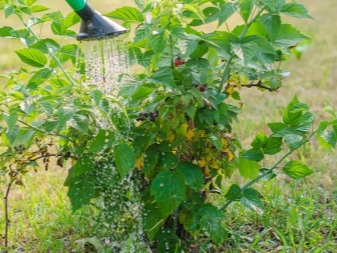
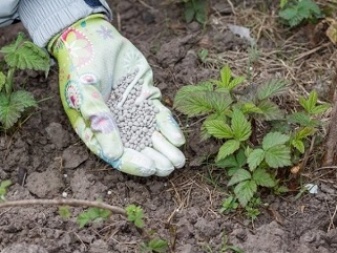
The nuances of cuttings of different varieties
Garden blackberries are propagated by cuttings, but it is important to take the variety into account. For example, a thornless bush grown by cuttings may become thorny. It should be noted that varieties without thorns, when propagated by green or lignified cuttings, die even in the process of obtaining seedlings. For remontant blackberries, cuttings should be carried out in the summer. So the seedlings will be ready for transfer to a permanent place in the first month of autumn.
As a result, young bushes will bring their first harvest the next year. For ordinary and standard blackberries, the option of propagation by lignified cuttings is optimal. For them to grow and develop safely, it is enough to take good care of them.
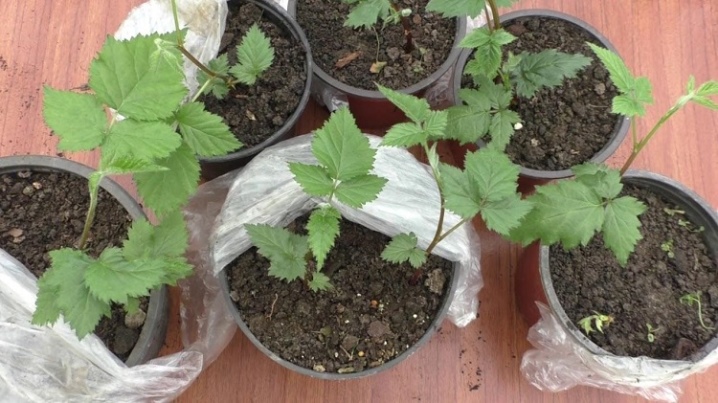













The comment was sent successfully.